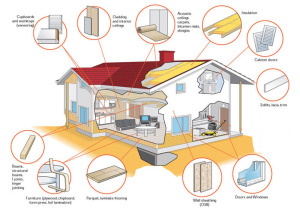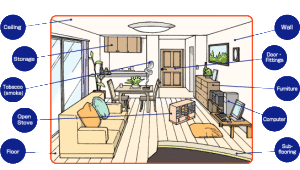What is Formaldehyde?
The danger of formaldehyde
ECOBoard uses only sustainable supplies of agricultural waste and residues. Since the waste and residue used comes from currently available crops, no woodland is being cleared for our source material. In this way, ECOBoard helps with woodland preservation.
On average, the woodchips used for the creation of traditional board materials are mixed with up to 25% toxic urea glue (10% for MDF). This urea glue contains Formaldehyde, a toxic gas that will be emitted over its complete lifetime. According to the EPA (Environmental Protection Agency) in the USA, formaldehyde is a pungent gas that can cause:
- Cancer
- Nausea
- Breathing difficulties
- Asthma attacks
- Irritation of eyes
- Irritation of nose and throat
- Wheezing
- Coughing
- Fatigue
- Skin rash
- Severe allergic reactions
Formaldehyde Restrictions
Awareness and restrictions against Formaldehyde is growing and the E0 norm is being applied more and more. However, this norm is obtained by adding additional chemicals to the formaldehyde glue that contain the toxic gasses. This does not solve the problem of toxicity, it only masks it.
Solution?
ECOBoards are manufactured using MDI polyurethane as a binding agent that produces a “zero formaldehyde” or “formaldehyde free” material. This means that ECOBoards have emissions far below the strict E0 European low formaldehyde (LF) standard and the USA (HUD 24) standard. ECOBoards are therefore suitable for specification in environmentally sensitive areas.
Old Solution?
To obtain the strict formaldehyde emissions, the urea glue that is used in traditional boards is added with extra chemicals that contain the formaldehyde. This makes the boards totally unsuitable for recycling, composting or burning!



